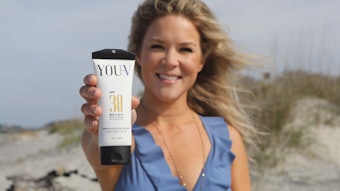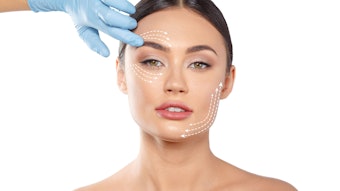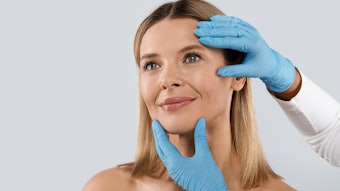
Comedian John Oliver recently centered an episode of Last Week Tonight on medspas. Behind the laughs of how easy it can be for these establishments to allow a few bad apples to facilitate careful procedures, it sounded an alarm for patients and practitioners, begging the question: are the current state by state regulations enough to keep patients safe in an area of medicine where beauty and medical practices cross paths? Estheticians, law professionals and surgeons agree there should be clearer universal standards for compliance and safety as society sees this area of medicine–still in its infancy, advancing and populating more and more.
While Oliver’s coverage was a generalization, highlighting careless casualties that certainly infiltrate the industry, it points to a real concern. There are many medspas doing things the right way—professional, patient-centered and safe—but unfortunately, at the same time there are many that do not. Within the blurry line between beauty and medical practice in aesthetics, two very different grades of care, there are professionals that vary in titles and require different training and thresholds to practice intense treatments like microneedling, injectables and lasers, but current laws lack consistency and clarity to uphold the safety and extent of their diverse roles.
In case you missed it:
The Illusion of Oversight: How Medspa Medical Directors Often Fall Short
“A medical director should be the person overseeing the day-to-day medical operations of a medspa,” says plastic surgeon Johnny Franco, MD. “This means ensuring that treatments are safe, providers are properly trained and any complications are handled promptly and effectively.”
The term medical director, he’s noticed, has been loosely applied, however. In many cases, the medical director isn’t involved in care, doesn’t supervise treatment protocols and isn’t available to assist when complications arise, as Oliver mentioned, and when medical directors are involved, they rarely possess training in aesthetic medicine specifically, Franco adds, making them unqualified to guide others in lower ranking. Licensed master esthetician, Susanne Schmaling, agrees, pointing to the fact that the requirement for medical supervision is often used as a legal loophole rather than an actual safety structure.
“We need accessible collaboration models that are based on expertise, oversight and transparency—not just financial arrangements,” Schmaling says.
Supervision in states ranges from hands-on clinical engagement to a licensing arrangement where a physician's name appears on paperwork with little to no involvement, their title serving as a mere passage for other professionals to run a medspa. This inconsistency makes medical accountability elusive in many states, says Sara Shikhman, Managing Partner at Lengea Law, a healthcare law firm for medspas.
No Checks, Few Balances: Lax Oversight and Vague Laws Enable Medspa Mismanagement
In many states, non-physicians can own the business portion of a medspa, typically via an MSO model. Shikhman says the states that follow the corporate practice of medicine doctrine—including California, Texas, New York and New Jersey, however, prohibit non-physicians from owning or controlling the clinical side of the practice. Instead, they must form a business services agreement with a physician-owned professional corporation, she explains.
Texas, she says, presents an ideal example of regulation and oversight to manage what professionals are allowed to do under their scope of training. Texas has enacted a Medical Practice Act and Texas Administrative Code. While it does not mandate onsite supervision, it establishes that physicians may only delegate to licensed professionals and must ensure that adequate training, protocols and follow-up systems are in place. A physician must ensure that proper protocols and oversight are in place, but may supervise from a distance, as long as they are available for consultation.
Florida, on the other hand, presents a concerning model, she adds. Despite legal requirements for supervision, the lack of detail on what supervision entails allows for minimal involvement, opening the door to delegation of complex procedures with limited medical oversight, she explains.
“There are also additional requirements for supervision in Florida if the procedures being done are ‘primarily dermatologic’ but there is no definition of this in the law,” Shikhman says. “This vagueness has led to situations where a physician might oversee a hundred medspas without setting foot in them, raising significant concerns about safety and compliance.”
Though inspections by health authorities for medspas exist, they do not occur as regularly as they should, Shikhman has noticed. A lot of times inspections are based on anonymous and incorrect reports of competitors of the business rather than routine check ins, she adds. Many medspas go years without any regulatory scrutiny, and this has allowed non-compliant practices to proliferate, especially because there is no pre-opening inspection for medspas in most states either.
“These [pre-opening and regular] inspections should assess licensure of providers; scope of practice compliance; inventory integrity; documentation of supervision and delegation and patient consent and safety protocols,” she says, similar to the standards restaurants comply to.
From Training to Tracking: A Call for Uniform Oversight in Medspa Practices
Universal baseline training for those who work under supervision should also be in place next to universal ownership and supervision compliance, such as minimum clinical hours under direct supervision; physician-signed credential verification for each injectable or device; annual competency evaluations; and formal documentation retained by the practice, Shikhman recommends.
Proper, hands-on training, certification and real-world experience should be evaluated before providers can independently treat patients, Franco says. Oversight should be more than checking boxes, however–it should include direct involvement and mentorship from the physician, he adds.
Oliver also touched on the fact that sketchy websites producing unapproved injectables and other medical devices exist, allowing individuals who are not trained and do not hold a license to obtain these products to administer them. Shikhman suggests a national supply chain tracking system, akin to pharmaceutical tracking systems, that should be mandated by the state. Every injectable product should have a verifiable lot number, authorized distributor and record of purchase, she adds.
Before You Book: Key Questions Every Patient Should Ask at a Medspa
A national medspa registry should be established as well, Shikhman says, listing supervising physicians, injector credentials, product sourcing details and any board violations or sanctions that patients can access to distinguish trustworthy medspas.
Patients should ask a series of questions before undergoing any treatment in a medspa, according to Franco, Schmaling and Shikhman:
- Who will perform the procedure and what is their license?
- How many times have they performed this treatment?
- Where did they train and who is supervising them?
- Are the products used FDA-approved and sourced from U.S. distributors?
What happens if there’s a complication? - Is this treatment on or off label and what does that mean for the patient?
- Who is your medical director?
- Are you licensed in this state?
- What device are you using, and is it FDA-cleared?
- Are you insured?
- Who is overseeing your practice, if applicable?
The level of involvement by a physician should correlate with the risk and invasiveness of the treatments offered. For example, laser treatments and injectables require much more supervision than facials or massages, Franco says, and the medical director shouldn’t just be “on call” or several hours away, as Oliver highlighted.
“Unfortunately, most patients don’t understand the difference,” Franco says. “In today’s world, social media influencers often seem more trustworthy than experienced medical professionals, [causing] a lot of confusion around titles, certifications and qualifications—and it’s easy to see how patients can be misled.”
Oliver also highlighted FDA-cleared vs FDA-approved, insinuating FDA-cleared may be more prone to error because it hasn’t reached approval. However, Juliana Ucchino Koval, Chief Operating Officer at PDO Max, says FDA-cleared rather than FDA-approved doesn’t mean it’s less safe. It simply reflects its device classification and level of invasiveness, determined by the FDA, that would require more extensive review.
Class II, or FDA-cleared, devices still undergo extensive safety and efficacy testing. The PDO threads at PDO max, she says, underwent comprehensive safety and tensile strength testing to become clear. Clinical trials are generally not required if a predicate device already exists, she adds.
Class III, or FDA-approved devices, due to their higher risk profile, require more extensive clinical trials and in-depth safety data to demonstrate efficacy and safety, Koval explains. Each manufacturer for these kinds of devices must submit a Pre-Market Approval application, even if similar products are already available. This includes clinical trials guided by FDA specifications provided during pre-submission meetings.
Patients should look for products that are FDA-cleared or FDA-approved, depending on the device class. “As long as a product is cleared or approved, patients can feel confident in its safety,” she says.
Patients, however, should ask if the devices being used are FDA-cleared or FDA-approved, depending on the type of device, and also request to see the product packaging to confirm authenticity and avoid counterfeit products before undergoing the treatment, Koval says.
The real challenge is how to implement oversight in a way that’s efficient, fair and doesn’t overly burden small businesses that are genuinely trying to do things the right way, Franco says, as there is a population of estheticians who specialize in these treatments, though they do not possess a medical certification and instead complete proper training.
Estheticians Are Here to Stay: They Want a Future with Clear Standards, Advanced Licensure, Defined Roles
“Hiring qualified providers in the aesthetic space is incredibly challenging—whether it's for a medspa injector or an associate surgeon,” Franco says. “There should absolutely be meaningful qualifications and standards in place regarding training.”
Some estheticians receive advanced education and still face scope restrictions based on outdated laws, however [1]. Schmaling says there needs to be clear scope definitions at the state level, a pathway for advanced licensure and hiring practices that prioritize education and competency, ensuring estheticians reach those meaningful qualifications to be hired or trusted, without pushing them out. For example, an esthetician who is extensively trained on laser use would need a separate certification before they can use other devices offered at a medspa, she adds.
“I believe supervision is necessary for prescription-level or invasive procedures, but for many non-ablative, cosmetic treatments, supervision should not be required if the esthetician holds verified advanced training and ideally state licensure,” Schmaling says.
Supervision mandated according to the state, she adds, should include a treatment-specific delegation protocol, defined oversight responsibilities, real-time consult availability and required medical malpractice insurance requirement by the supervising practitioner to avoid inconsistency and confusion without compromising patient safety. Before performing procedures and facilitating modalities under supervision, estheticians should be required to obtain hands-on training, ongoing CE focusing on device risk level and anatomy, competency-based evaluations and not just hours, she explains.
As there's a possibility these treatments and procedures could become facilitated only by medical practitioners as states search for legal pathways that promise safety and ethics, Schmaling suggests a framework that allows estheticians to populate medspas: a second-tier license for advanced esthetics, treatment categories defined by risk, certification frameworks aligned with accreditation standards and publicly accessible scope-of-practice charts for consumers and employers.
“Estheticians are not the problem; we are part of the solution,” she says. “But only if we are allowed to work within a system that recognizes our training, respects our role and gives us a clear path forward.”
Medical Aesthetics: A Young Industry at the Crossroads of Beauty and Regulation
Rooted in beauty, aesthetics is a different genre of medicine, and still a recent field of practice. In the 1970s, doctors began using lasers for medical purposes, but cosmetic plastic surgery became a sensation in the 1980s and 1990s. It wasn’t until FDA approval in 2002, however, that truly marked the beginning of medical aesthetics as an industry [2].
Every day, devices and regimens advance in complexity, affecting professionals who hold a multitude of titles, but who also all play a role in medspas. It’s clear that as aesthetics continue to progress, safety needs to be evaluated to uphold the a strict standard of medical care, as hospitals and clinics do. Estheticians, surgeons and law professionals all agree there needs to be advancements in laws and compliance to ensure no casualties happen like the ones Oliver discussed, without taking away careers individuals worked hard to achieve.
“As a plastic surgeon, even after completing my training in 2011, I’m still learning every day,” Franco says. “With limited experience, providers often don’t even know what warning signs to look for—or what complications are possible; that’s dangerous.”
References:
1-https://www.medestheticsmag.com/business/legal/article/22941089/estheticians-vs-state-regulations-esthetics-council-leads-national-push-for-licensing-reform
2-https://americanmedspa.org/blog/the-past-present-and-future-of-medical-aesthetics











